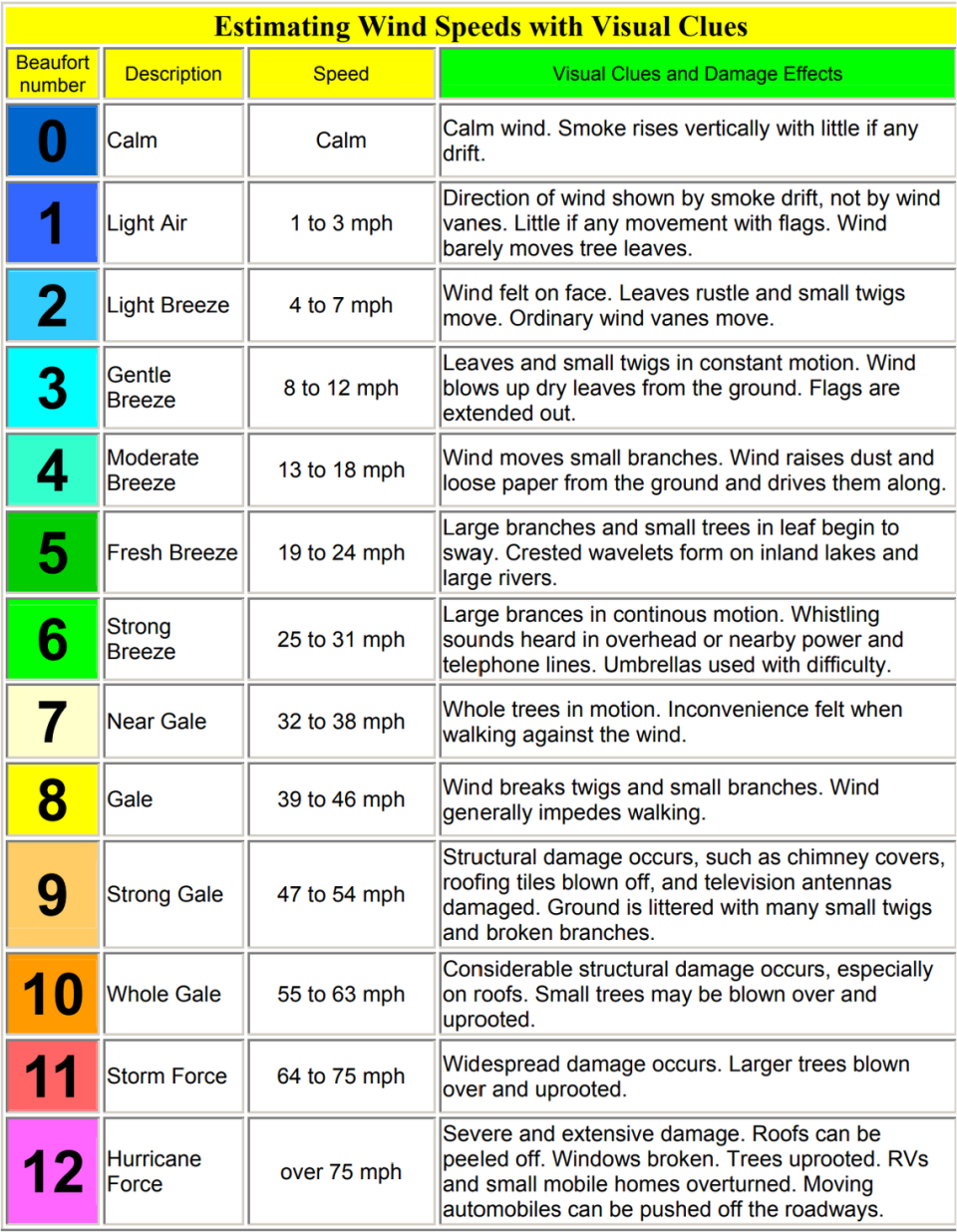Do you know how to read a weather forecast? Here’s a cheat sheet, from temps to wind speed
Weather affects us all basically every day, regardless of if we realize it or not.
Weather dictates what kind of plans we make or companies’ decisions when hosting outdoor events. It impacts our mood and happiness or can cause financial strain during weather-related events that cause damage to our homes and property.
With weather impacting our lives so much, knowing how to read a weather report is essential to plan your daily or weekly schedule effectively.
Here are some of the key things you should understand when looking at a weather report.
How to read an extended forecast
Suppose you receive your weather from the National Weather Service or a multitude of other weather outlets that perform a similar function. In that case, you’ll most often deal with the extended forecast.

The four main components of the extended forecast are the high and low temperatures, the forecast weather conditions, and the chance of rain or snow, if applicable.
High temperature: Labeled on the forecast as “high,” this is the hottest temperature it will get that day. The average high temperature for Boise in March is 56 degrees.
Low temperature: Labeled on the forecast as “low,” this is the coldest temperature it will get that day. The average low temperature for Boise in March is 35 degrees.
Forecast weather conditions: This is the prominent graphic for each date, detailing the expected conditions for the day. Some days, it may just say “sunny,” as is forecast for Boise on Saturday, while other days, it may indicate rain or snow.
For cloudy days, the Weather Service has a scale to indicate just how cloudy it will be:
Clear/sunny - 0% cloud cover
Mostly clear - 12.5% - 25% cloud cover
Partly cloudy - 37.5% - 50% cloud cover
Mostly cloudy - 62.5% - 87.5% cloud cover
Cloudy - 100% cloud cover
Chance of precipitation: The chance of precipitation is indicated by a percentage alongside the weather forecast. If the forecast shows a 50% chance of rain for Boise — such as on Sunday night — that doesn’t mean the whole region either has a 50-50 chance of rain or not, but that it will 100% rain in the region of Boise, but for any given area within the Boise area there’s a 50% chance of seeing rain.
What does humidity mean?
Humidity measures the percentage of water vapor in the air around us. It’s indicated by a percentage, and the higher the percentage, the “wetter” it feels outside.
Weather reports typically calculate “relative humidity,” which measures the percentage of water vapor the surrounding air can hold at its current temperature, according to National Geographic. Air at higher temperatures can hold more water vapor, meaning a high relative humidity percentage — typically at 50% or higher — on a hot day is what people consider “humid.”
Going outside on a humid day can feel more laborious because as we sweat, the atmosphere can’t evaporate our sweat as effectively, causing us to remain sweaty and find it tougher to cool off.
Wind speed and direction
The wind speed and direction can also impact how it feels outside. Weather apps will often include a “feels like” temperature, which is a result of the wind.
Even if the air temperature in a region may be high, a cold wind from the north will often make it feel cooler. Inversely, wind coming from the south will often be warmer, which is great on a cool day but not as welcome on an already-hot day.
The speed of the wind can also be a factor. A summer afternoon spent watching the Boise Hawks at Memorial Stadium during a 10 mph gentle breeze will be a vastly different experience from a ballgame with sustained winds of 25 mph.
The Weather Service differentials wind speeds into 12 categories on the Beaufort Wind Scale, which can be found below:

Watches, advisories and warnings
Anytime a significant weather event is expected, the Weather Service will issue a weather watch, advisory or warning. Here are the differences between them:
Watch - Issued when the risk of hazardous weather has increased significantly, but meteorologists don’t know the location or timing. A watch is issued to provide enough time for those who need to set plans in motion due to the weather.
Advisory - Issued when hazardous weather is either likely, imminent or occurring. Advisories are issued when weather conditions aren’t too severe to be considered a warning, but the threat to life and property is still possible.
Warning - Issued when a hazardous weather event is likely, imminent or occurring and the weather conditions threaten life and property. Anytime a warning is issued, it should be taken seriously.
Boise residents will be most familiar with weather alerts pertaining to winter weather, freezes and frost, high wind, severe thunderstorms and flash flooding.

